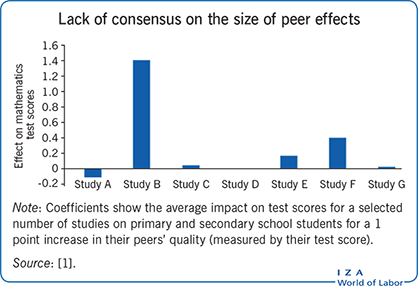Elevator pitch
The role of social interactions in modifying individual behavior is central to many fields of social science. In education, one essential aspect is that “good” peers can potentially improve students’ academic achievement, career choices, or labor market outcomes later in life. Indeed, evidence suggests that good peers are important in raising student attainment, both in compulsory schooling and university. Interventions that change the ability group composition in ways that improve student educational outcomes without exacerbating inequality therefore offer a promising basis for education policies.
Key findings
Pros
Peer effects are important for student academic achievement throughout all levels of education.
Evidence suggests that the impact of peers is different for students of differing abilities.
Peer effects are heterogeneous: evidence suggests that low-achieving students benefit most by being placed in a class-room with high-achieving peers.
A higher proportion of girls in the classroom raises student attainment for both boys and girls.
Cons
There is still disagreement among economists about the magnitude and shape (i.e. linear or non-linear) of peer effects.
It is challenging to isolate peer effects from other factors that affect student attainment, such as family background, teacher quality, or other institutional factors.
Little is known about the mechanisms through which peer effects work.
Given the heterogeneous nature of peer effects, it is difficult to design a single optimal policy to raise student attainment.
